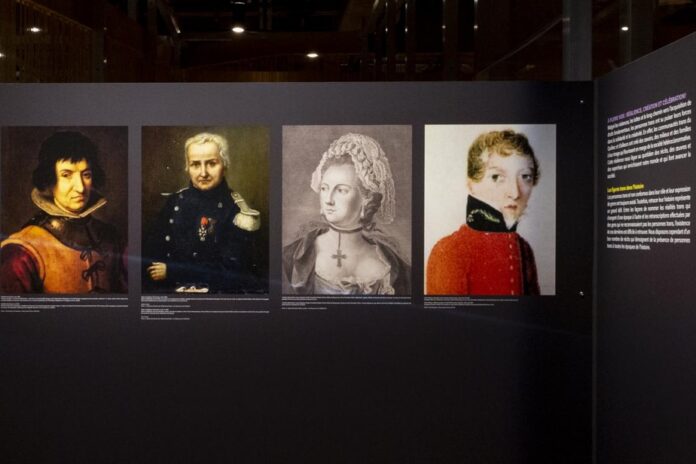(Montreal) Gender identity concerns everyone: this is what the new Unique exhibition aims to demonstrate, presented on Wednesday at the Musée de la civilization in Quebec. The exhibition, which mixes works of art, videos and historical objects, illustrates the plurality of concepts surrounding the notion of gender, which goes far beyond the male-female binary.
“The approach we have chosen to take is to say that we are going to accompany people,” says Caroline Lantagne, in charge of exhibition projects at the Museum. She points out that the exhibition offers a “gradual journey” to foster learning for all visitors, regardless of their level of knowledge about gender diversity.
“We thought we were going to really show what we’re talking about when we talk about gender, by placing it in a broader perspective, which is that of identities, so that everyone feels challenged,” adds Ms. Lantagne. , saying that “everyone has a gender”.
For Marie-Philippe Phillie-Drouin, who is in the general management of the organization Divergenres, the exhibition “represents an incredible opportunity to reach a general public. General public, who are more and more interested in gender issues, in trans realities”. Marie-Philippe is also part of the scientific committee that was consulted to develop the exhibition.
“There is a great lack of knowledge of gender issues, simply because it is not part of the curriculum of our education system, explains Marie-Philippe, who is a non-binary trans person who uses the pronoun iel. For me, it’s a springboard to educate a population not only in the Capitale-Nationale, but also everywhere in Quebec, because Quebec is a tourist city, so people move there “.
The exhibition is divided into several distinct sections. The first dwells on the basic notions of gender, explaining what the concept of binarity, or sex assigned at birth, is. The diversity that exists in nature with regard to notions of gender is then discussed. For example, in seahorses, it is the males who carry the eggs in a ventral pouch until they hatch.
“We present in our journey, at each stage, testimonials. In this case, people who are both intersex people, but also specialists,” adds Caroline Lantagne.
The third part of the exhibition approaches notions of gender from an anthropological point of view, notably by presenting how, in certain cultures, men perform tasks that we consider to be traditionally feminine.
The notion of a “third gender” in some communities is also detailed, as is two-spirit among Indigenous peoples. A work by Cree artist Kent Monkman, who frequently includes a non-binary character within his paintings, is also displayed.
One of a Kind presents a multitude of objects, such as early 20th-century boys’ dresses, in the section of the exhibition focusing on hetero cisnormativity. That is, which looks at the fact that being heterosexual and cisgender is “the norm” and that anyone who does not conform to these criteria is required to “come out of the closet”. Visitors will also be able to learn more about the various current feminist, queer and trans social movements and their history.
The exhibition ends by celebrating the resilience and creativity of trans and non-binary people, whether in literature, film, or the art of drag. A costume of the popular drag queen Rita Baga is also on display. Two artistic installations where occasional performances will take place are also at the end of the visit.
The One of a Kind exhibition is in the news, as anti-drag protests are held in Canada and the United States.
“When there are concerns or fears around drag, it’s a misunderstanding of what is personality versus what is performance art to entertain an audience. [It’s] misunderstanding also of how art adapts to different environments, ”says Marie-Philippe Phillie-Drouin.
“What I would like people to take away is that trans people are human beings, and we are much more complex than our transition journey, than our gender identity. We are members of their family, we are citizens, we are co-workers,” adds Marie-Philippe, pointing out that One of a Kind offers a nuanced look, showing that people belonging to diversity sexuality and gender do not form a homogeneous group.
For Caroline Lantagne, the exhibition is in line with the museum’s desire to “place the human being at the heart of its concerns”.
One of a Kind runs until April 14, 2024.















